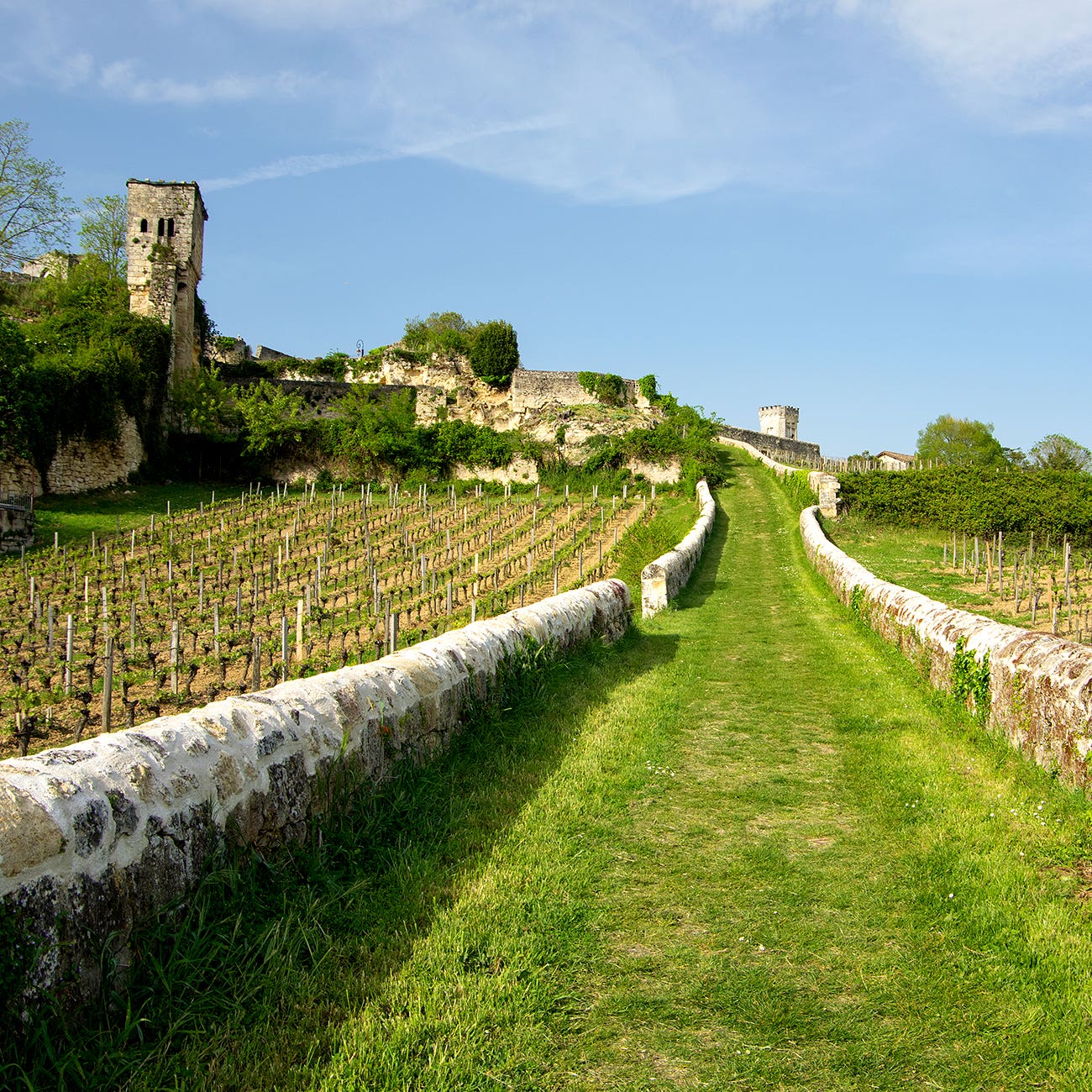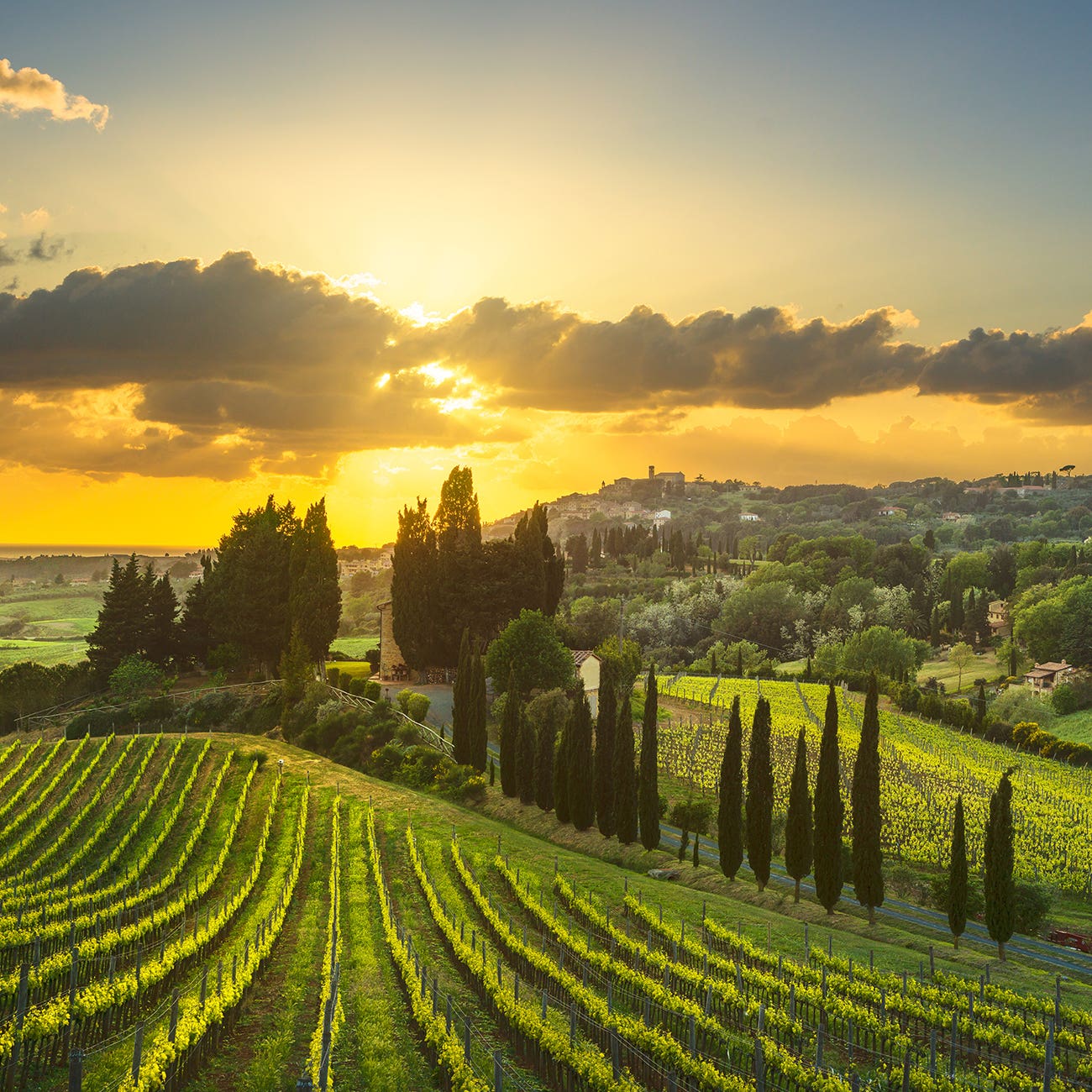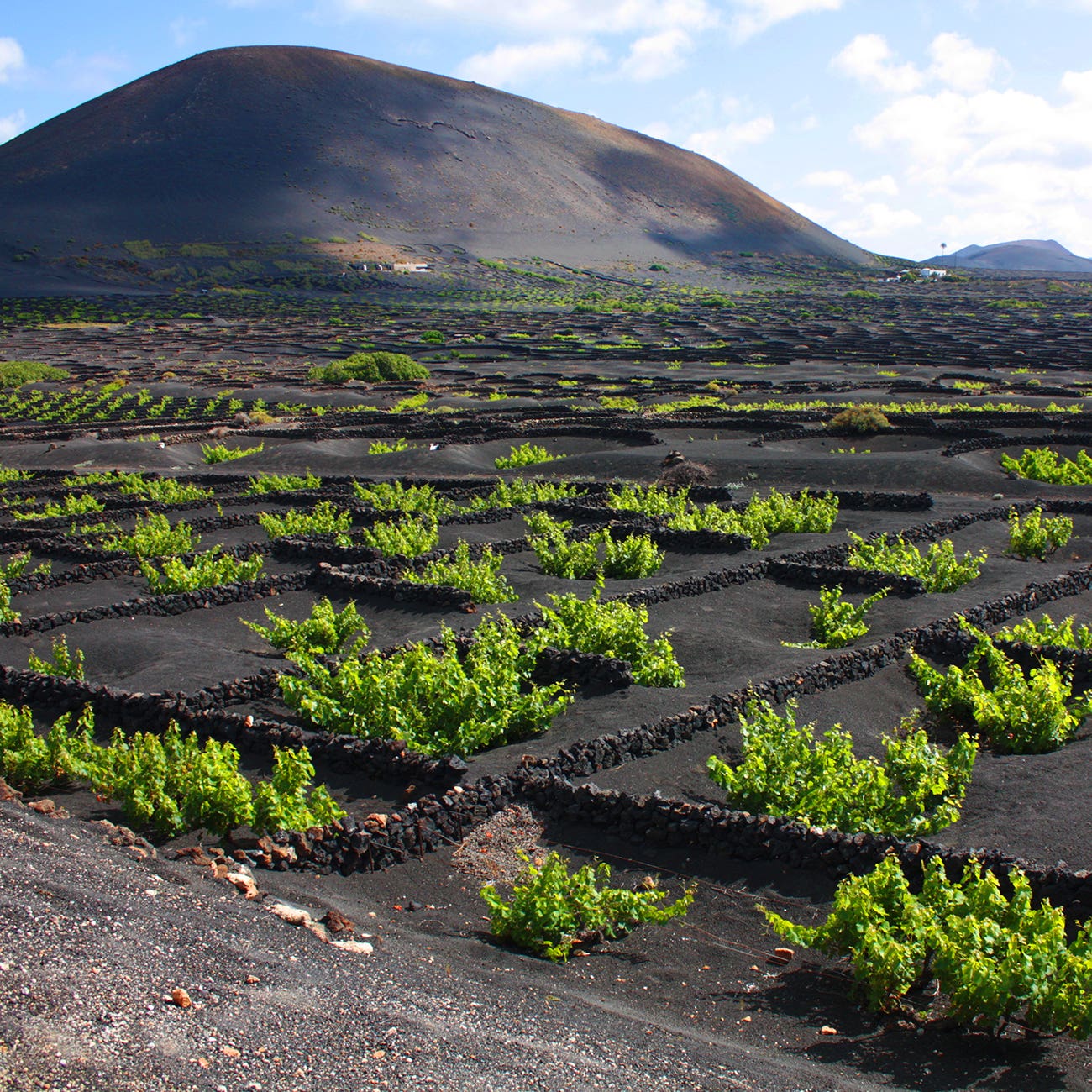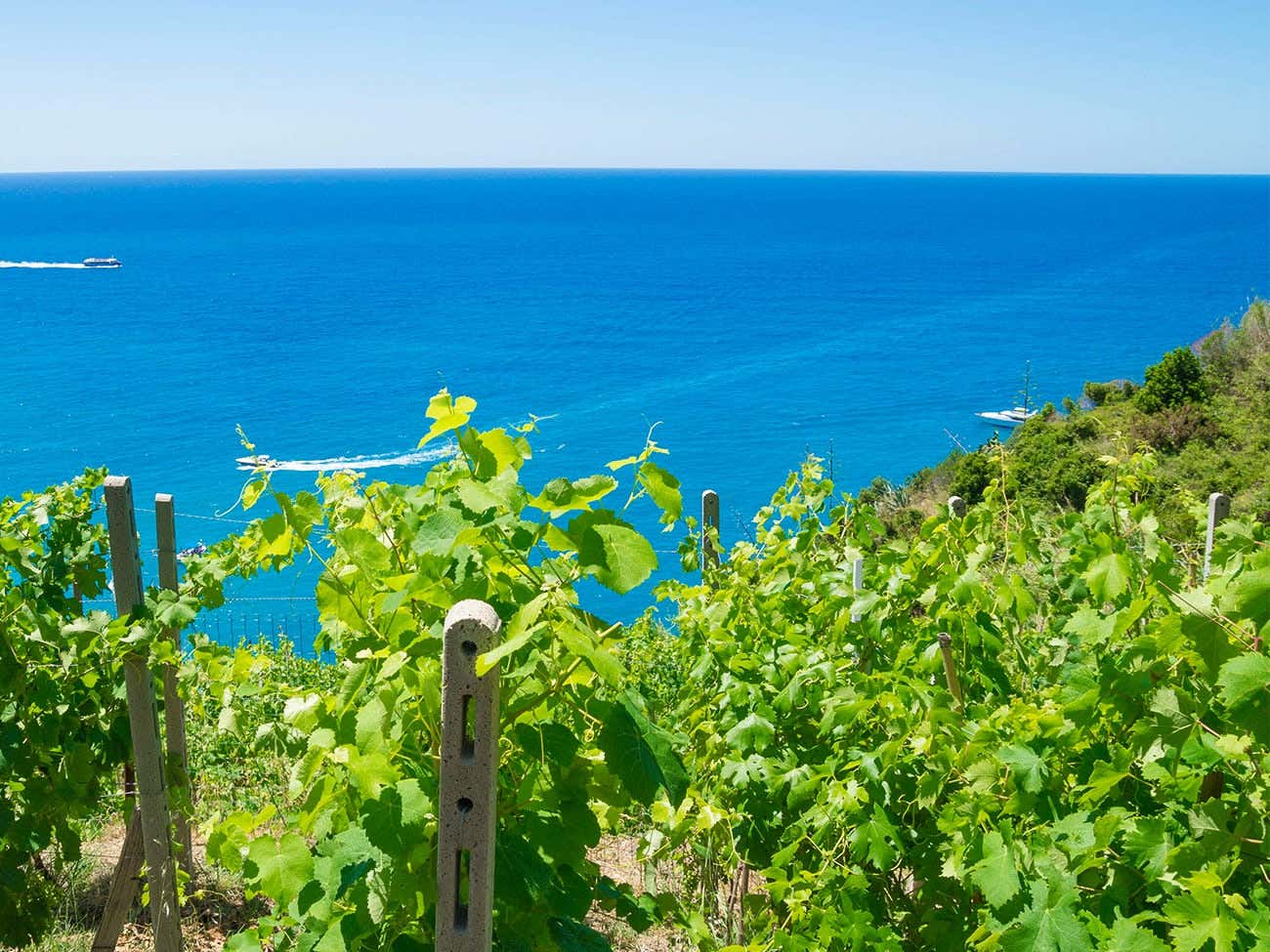They say that, in order to ripen well, Mourvèdre grapes must have their feet in water, their head towards the sun and a view of the sea. In other words, this wine does not like to be thirsty, should be close to water and needs a lot of sun and heat. Just like a classic description of the ideal holiday destination!
It’s hard to say where this wise saying about Mourvèdre vine comes from, but one would guess that its roots lie in the south-west of Spain, the birthplace of this grape variety that is known locally as Monastrell. Or maybe it originates from the south of France, where it is the main variety of grape that goes into Bandol wine, one of the country’s most well-known appellations. Both regions are located on the shores of the Mediterranean. The vines most certainly have a sea view.
Of course, these are not the only two regions where the proximity to water plays a prominent role in the choice of grape variety, and influences its style as well as the quality of the vines grown there. Several of the world’s wine regions are defined by the presence of a vast stretch of water. They benefit from what is called a maritime climate, where the sea acts as a moderator. In hotter regions, this type of climate lowers temperatures during the summer, thus preventing exceedingly hot heat waves. In cooler regions, it protects the vines from late-spring and early-autumn freezes, as well as buffering winter cold fronts.


The Bordeaux landscape is home to the hills of the prestigious Saint-Émilion vineyard.
Cabernet to the left, Merlot to the right
Bordeaux lies in the heart of the most well-known maritime climate. The region is a prime example of how the Atlantic Ocean affects grapes planted within its grasp. Bordeaux is divided in two by the Garonne and its tributaries.
On the left bank, the Medoc delivers its mainly Cabernet-Sauvignon wines to famous towns like Pauillac, Saint-Julien, Saint-Estèphe and Margaux. On the right bank, represented first and foremost by Pomerol and Saint-Émilion, there is much less Cabernet-Sauvignon. This is more Merlot or Cabernet Franc country and the reason for this difference is the ocean. Cabernet-Sauvignon needs a longer season, and because the right bank is further from the Atlantic, the ocean’s moderator effect is not as strong. This bank is more vulnerable to frost, both in spring and fall, and it cools down quicker at the end of the season. The result? The growth period is a little shorter, which explains why the chateaux count on more precocious grape varieties like Merlot and Cabernet Franc.


Bordering the Mediterranean, Maremma is Tuscany’s mildest region.
The italian way
In the Maremma, Italy’s answer to Bordeaux, and in particular in the beautiful hills of Bolgheri, the maritime effect is felt in a rather different way. This Tuscan coastal region is known for its dreamy beaches, turquoise waters and exceptional landscapes. But it was always considered too hot to grow the most famous of Tuscan grape varieties, the Sangiovese. The grapes would ripen much too quickly, producing a wine with a high alcohol volume but bearing tannins and aromas that lacked maturity.
Noting similarities between the Maremma and Bordeaux, Mario Incisa della Rocchetta decided in 1944 to plant Cabernet-Sauvignon and other Bordeaux grape varieties in Tuscan soil. It became clear that this climate so influenced by the Mediterranean allowed Cabernet and Merlot grape varieties to ripen to perfection. The wine produced from these vines became known as Sassicaia, which has since become one of Italy’s most famous crus. Today, the Maremma boasts some of the most prestigious wines in the country—and its beaches are still just as idyllic!


Located in the Canary Islands, Lanzarote vineyard’s most unique characteristic is the volcanic soil upon which it grows.
A wine with a desert touch
As a further example, think of the refreshing effect of the sea in one of the southernmost wine regions of the northern hemisphere: The Canary Islands. To get an idea of their geographic location, remember that the archipelago’s most eastern island, Lanzarote, sits less than 100 km from the Saharan desert.
Most of us have heard about the Canary Islands’ volcanic beaches and mesmerizing black sand. What is more surprising, however, is that the Atlantic Ocean that encircles these islands is rather cool, even at such southern latitudes. Indeed, the locals say that September and October are the only two months in the year where the water is warm enough to comfortably swim in.
The sea’s fresh temperatures may make swimming a slightly uncomfortable experience, but the cool winds that blow in from the ocean act as a giant air conditioning unit for the people living there, and for the vines! In many ways, it’s what makes wine-growing possible here. And this is not the only advantage to having the ocean so close-by. Without necessarily producing rain, the hot and sand-laden winds that blow in from the Sahara create fog and therefore moisture, which the vines greatly benefit from.
The dry lands
While all maritime climates don’t display the same behavioural patterns, it’s also true that they are not all alike. Vast stretches of water generally create a climate that favours humidity, but in some spots, they can also block the rain. For example, one of the factors that makes Bandol—and the rest of Provence and Languedoc-Rousillon—a popular tourist spot for summer vacations is indeed the fact that rain is rare in these locations.
The particular nature of this climate is due to the Mediterranean which, combined with the direction of the prevailing winds, tends to keep the rain away during the summer months, or high season in the tourism industry, and in fall too, during harvest season. Precipitation is therefore kept to winter and spring—a winning combination for tourism, and viticulture.
This Mediterranean climate is not exclusively limited to regions bordering the Med. It stretches across one single line of latitude, affecting many areas around the planet. For example, think of Emilia Romagna located on Italy’s east coast, on the Adriatic Sea.
+Discover wines from Emilia-Romagna
The vines from this coastal region are just as spectacular as its beaches. Home of the famous Ferrari and Lamborghini cars, Emilia Romagna is also considered by many to be the heart of Italian gastronomy, with products such as Parmesan cheese, Modena balsamic vinegar, Parma ham and other charcuterie like Mortadella. Vines influenced by the Adriatic produce wine that pairs up beautifully with these scrumptious bites. Fruity Sangiovese, with its clean and refreshing acidity, is a wonderful illustration of how the region’s locals like their wine. It is a delight to taste these wines on the estate, or even better, to take them along with us to a spot a few kilometres away for a picnic on the beach. It’s hard to imagine a more delicious meal!
 Access to SAQ Inspire personalized services and store inventories are unavailable at the moment.
Access to SAQ Inspire personalized services and store inventories are unavailable at the moment. Free in-store delivery with purchases of $75+ in an estimated 3 to 5 business days.
Free in-store delivery with purchases of $75+ in an estimated 3 to 5 business days. 










